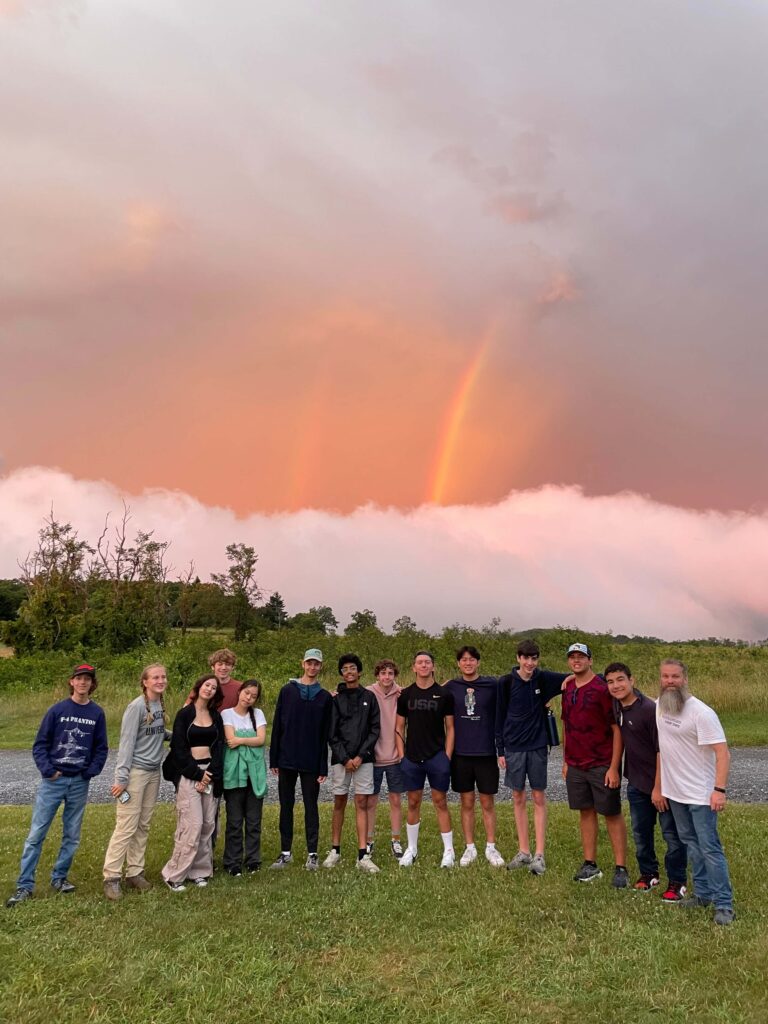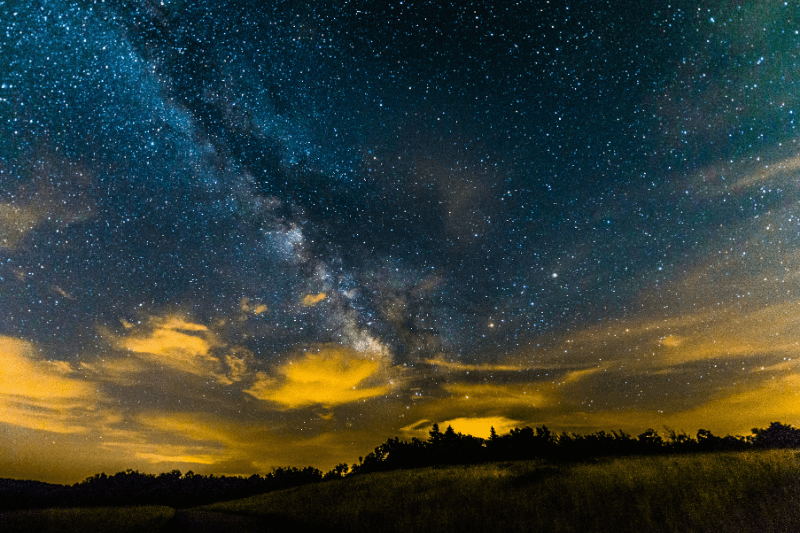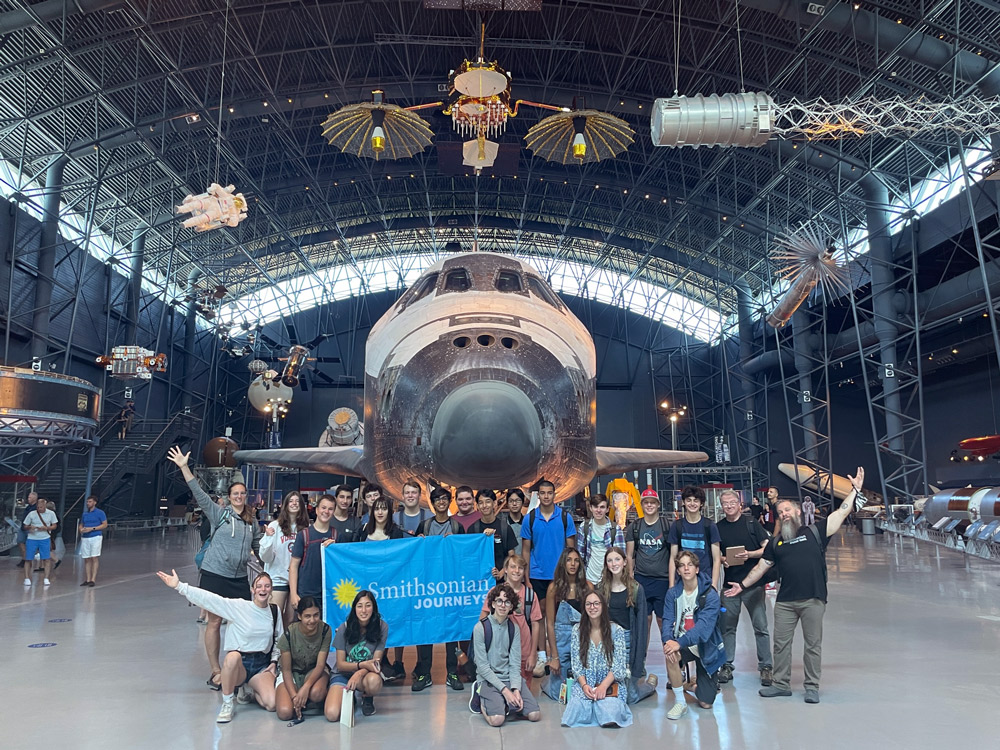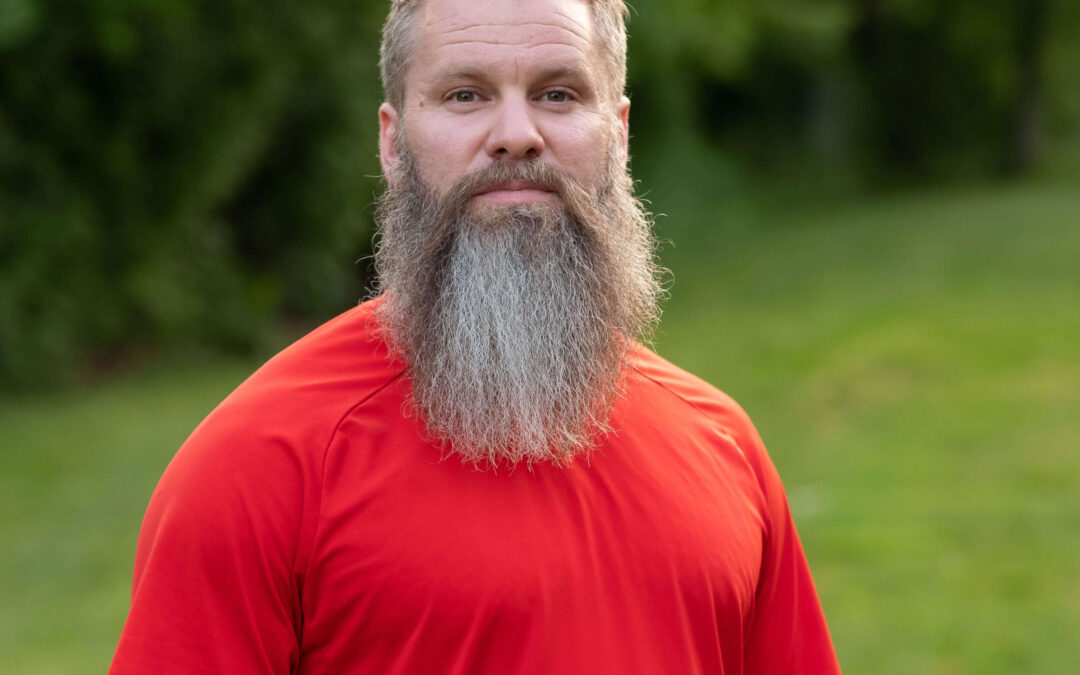Graham Lau is an astrobiologist and science communicator, as well as a father and self-described “sci-fi nerd, fitness enthusiast, and explorer.” He has twice led our aerospace program in Washington, D.C. & Houston. This summer, he will lead our program in Iceland focused on geology, climate change, and renewable energy. We recently spoke with him about his professional experience as a scientist, the highlights of the aerospace program, and what he looks forward to as a program leader.
Can you tell us about your background and how you began your scientific journey?
From the time I was five years old, I’d decided that I wanted to be a scientist and that I wanted to be involved in our larger philosophical explorations about our place in the universe, but even when I went to college I wasn’t quite sure which questions inspired me the most. I ended up earning my first two degrees in biology and chemistry from York College of Pennsylvania and interning at both the Graduate School of Oceanography in Rhode Island and at NASA’s Ames Research Center in California. After college, I spent a year focusing on my training and teaching in the martial arts while preparing for my next steps. I then spent two years studying astrophysics before jumping into my graduate studies in geology at the University of Colorado Boulder. I eventually earned a PhD in geology with a focus on astrobiology.
My research has taken me to three different particle accelerators to conduct x-ray spectroscopy, has allowed me to travel to the High Arctic for field work, and has brought me opportunities to collaborate with amazing scientists, engineers, philosophers, and artists from around the world. I’ve published articles on rare sulfur minerals, geological analogs in the search for life on Mars, the creation of interstellar messages for communicating with aliens, and more.
What makes up your professional life currently?
I currently oversee the communications for a nonprofit called Blue Marble Space; I’m affiliated as a Senior Research Investigator with the Blue Marble Space Institute of Science; I help to manage a Mars rover robotics competition in Utah every year; and I get to host a show for the NASA Astrobiology Program called “Ask an Astrobiologist.” I’m a member of the thinktank called the Overview Round Table, focused on exploring the impact on humanity of our current era in space exploration, and I’m an executive advisor for the Interstellar Foundation.
As a student program leader, I’ve led a technology and innovation program in Switzerland with the New York Times; an engineering and robotics program at MIT with National Geographic; and twice led the Smithsonian Student Travel aerospace program. This summer will be my first time leading the Smithsonian program to explore the geology, climate, and energy in Iceland.
What are some of your hobbies and interests? How do you spend your time outside of your professional endeavors?
I’m a father, a sci-fi nerd, a fitness enthusiast, and an explorer.
In my free time, I love to play video games or hit the gym for a workout. I train in weightlifting and have been getting ready to pick up some heavy stones in Iceland this summer—something some students might wish to try out as well. I also love martial arts, yoga, and rowing. When I’m outdoors, I love to hike and snowshoe.
I’m also a meditation instructor and have spent a good deal of time exploring meditation practices in a variety of settings, including in the landscapes of Iceland.
Finally, I absolutely love reading books. I can often be found reading three or four books at a time.
You’ve led our aerospace program in Washington, D.C. and Houston twice now. What, in your experience, makes this program special?
The D.C. to Houston program is fantastic for anyone who is interested in the history of flight, aircraft, and space exploration. But it’s also just a really fun trip for any students who want to learn more about how the Smithsonian has played a role in the history of our nation or who want to explore places like Washington, D.C., Shenandoah National Park, or NASA’s Johnson Space Center in Texas.

Washington D.C. & Houston Group – Photo: Samuel Gruber
Can you share any memorable anecdotes or experiences from past trips that highlight the impact of this program on students?
So many parts of this program are incredible, but some of my most favorite things are:
At the National Museum of Natural History, the students get a “backstage” experience in the meteorite collection, including seeing an ancient camel medallion made from a meteorite and getting to hold pieces of the Moon and Mars.
At the Udvar-Hazy Center, the students get to see one of the last three space shuttles that flew, as well as the last-flown SR-71 Blackbird.
During the group’s time to Shenandoah National Park, the twilight hike is incredible for learning about some mountain ecology and climate and is followed by some stargazing (two years ago, we got lucky and saw a giant green bolide light up the sky—it was reported the next day in media from all around Virginia and D.C.). I also have really loved spending some time with students who wanted to go for a run with me on the Appalachian Trail.

The Milky Way from Shenandoah National Park
There are so many awesome things to explore at Johnson Space Center, but one of the most memorable experiences happened last year when we were at the Neutral Buoyancy Lab (NBL) and one of the astronauts was there training for an upcoming mission. The NBL is one of the largest swimming pools on the planet and includes mockups of the ISS and space vehicles inside. The astronaut training was in her space suit underwater testing out a spacewalk she would later have to do in space.
What can students expect to gain from participating in this program?
Students on the aerospace program can expect to learn a lot about the Wright Brothers and the early history of flight. They’ll explore museums to see various collections, and will also have fun experiences like singing karaoke, hiking/running on the Appalachian Trail, and seeing lots and lots of aircraft and spacecraft. The program includes both adventure and learning experiences.
I’ve now had a few of the past students from the program reach out to chat with me about their college admissions and finding programs related to aerospace, avionics, space exploration, and more. But the program isn’t just for those who might want to explore careers in the aerospace industry—it’s also a bunch of fun for those who want to learn more about the Smithsonian, see meteorites, visit a NASA center, launch rockets, or learn about a bunch of different kinds of aircraft.

Graham (far right) with students in front of space shuttle Discovery
From a leader perspective, what are you looking forward to this summer in Iceland?
I feel a strong draw from the Land of Fire and Ice. As a geologist and a traveler, a place like Iceland has so much to offer. From the original geyser (named “Geysir”) to taking dips in hot springs; from lifting up the stones that Vikings used to test their ability to be rowers on their ships to exploring the history and culture of the Icelandic people, there’s just so much to do on the island.
I’m excited to share a lot of geological knowledge with the students— from tectonism and plate boundaries to volcanism and processes that allow for the use of geothermal energy (some 85% of Iceland’s energy infrastructure comes from renewable sources, including geothermal energy).
Iceland is also home to many lava tubes—caves formed during the active flow of near-surface lava—and researchers like myself use these lava tubes to test how we will explore similar lava tubes on the Moon and Mars. Finally, while we have so much to learn in Iceland about geology, climate, island ecology, and renewable energy resources, I’m also super excited to share my love of Norse mythology and Viking history with the students.
Finally, any other recent work or experiences you’re excited to tell people about?
Helen Keller once said that life is either a daring adventure or nothing, and we should all consider that a bold reminder. Of the many things I get to do in my professional career, traveling to share science and knowledge is one of the most exciting for me. From recent trips to L.A. to film for an upcoming documentary, to leading a meditation and giving a talk at an eclipse festival in Arkansas, I feel honored and privileged to be able to travel to speak with students, families, artists, filmmakers, and other scientists and scholars on a variety of topics. I find that one of the grooviest things we can do as humans is congregate around campfires or coffee tables and nerd out together on the biggest questions we’ve carried forward through time about where we come from, where we might be going, and whether or not we’re alone in the cosmos.
> Click here to learn more about our geology and climate program in Iceland
> Click here to learn more about the aerospace program in Washington, D.C. & Houston
> And click here to learn more about our Smithsonian Student Travel program leaders

